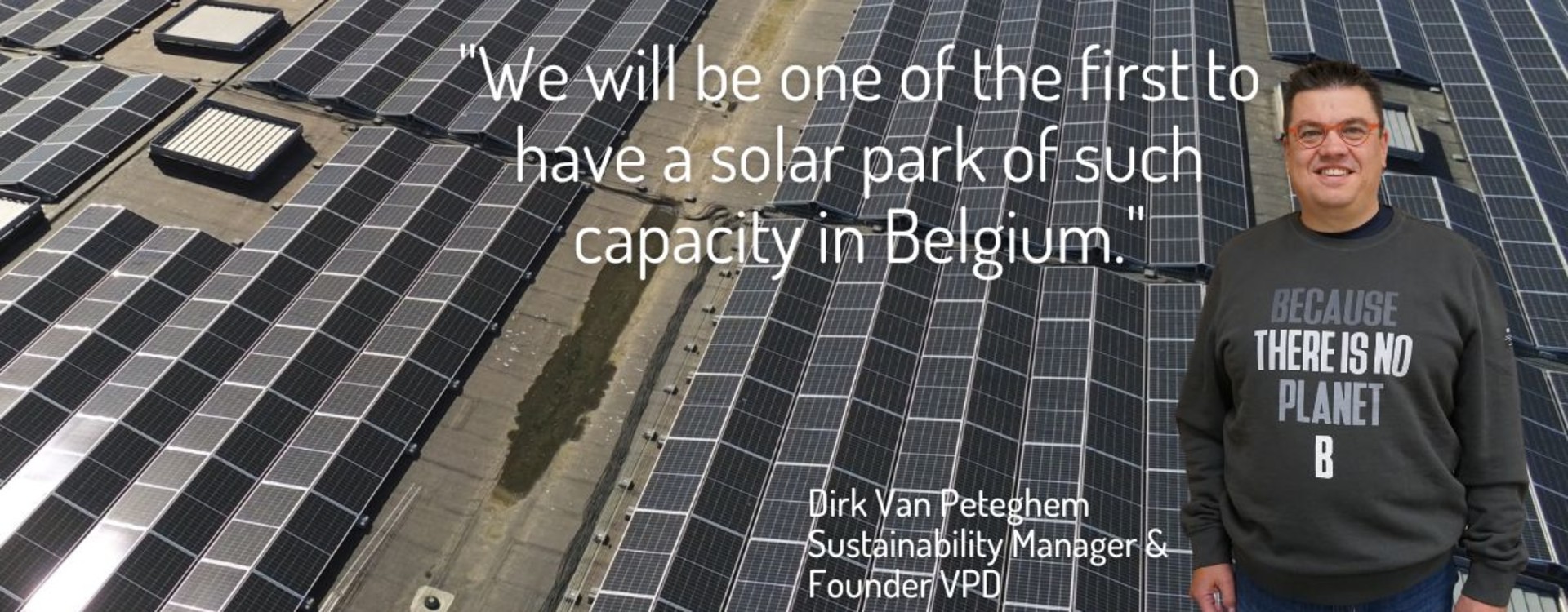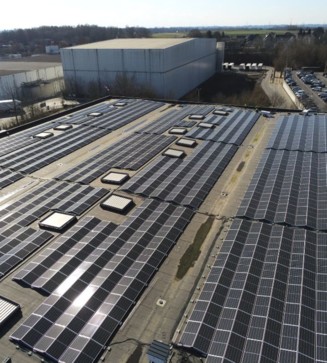Dirk Van Peteghem: "An absolute condition for achieving 100% coverage with electric vehicles is to start the last mile delivery as close as possible to the end customer. That's why we have a wide network of local hubs from which the last mile delivery is undertaken. We already have a fleet of 30 electric vans, and the first electric trucks have also been ordered. We look forward to presenting our first Volta truck to the public in April."
SUSTAINABLE INVESTMENTS
Dirk Van Peteghem: "In addition to investments in electric vehicles, it is, of course, important to have the appropriate charging infrastructure. Given that we are not building owners, we have discussed with WDP, the owner of the Zellik site, and agreed to build a solar power plant with on-site charging and storage infrastructure. The work began in December, first with the renovation of the roof, and then in January, with the installation of solar panels on a total surface area of 12,000 m². Excavation and wiring work for the charging stations are currently underway."
What makes this solar power plant unique in Belgium?
Dirk Van Peteghem: "We are the first site to not only have a solar panel park but also be able to store our energy in a mega-battery of 1376 kWh. Additionally, an Energy Management System (EMS) will ensure that we always make the appropriate choices regarding the use of energy at the right time. An integrated weather station will also predict possible yields for the upcoming days. We are proud to say that we will be one of the first to have a park of such capacity in Belgium."
SMOOTHING ENERGY PEAKS
Can you explain the advantage of a Li-ion battery and an Energy Management System?
Dirk Van Peteghem: "There are several advantages to using a battery. We can store our excess energy and use it when we need it. Delivery vans and trucks are charged in the evening and at night when energy production is zero. We cannot spread the charging time throughout the day. It is therefore advantageous to use the energy stored in the battery and avoid charge peaks when all vehicles are charging simultaneously.
The Energy Management System (EMS) will optimally use all available energy at the right time. Ultimately, we also plan to connect our planning software so that each vehicle has the amount of energy needed to complete its tour the next day.
The battery also serves as a backup in the event of a power outage. In this case, we can still provide enough energy to the vehicles so that they can leave the next day.
We want to use solar panels not only to power the charging stations, but also to provide electricity to our offices. Our offices will be renovated and equipped with new ventilation and heating techniques, including the installation of heat pumps. We also ensure sustainability in this area."
"We are open to dialogue with other companies"
The solar panels are now installed, what will be the next step in the site's transition?
Dirk Van Peteghem: "We are currently carrying out earthworks to install the charging infrastructure. We are planning to install six 60 kW fast charging stations, four 150 kW for internal use, and two 150 kW for external use. They can be expanded in the future. I think it is not necessary to over-dimension, although we are planning the wiring to be able to upgrade to 200 or 300 kW charging stations if necessary.
We are planning to place fast chargers at the loading bays. This will allow our drivers, and other carriers who come to load or unload at our facilities, to charge their vehicles during this activity, saving them valuable time.
I am completely open to dialogue with other companies to discuss how we have approached things and explain our vision for the future."
LOCAL HUBS
What about energy supply and charging opportunities in local hubs?
Dirk Van Peteghem: "We are currently looking into how to apply this on a smaller scale. Perhaps we will have to look to other sites in the future for this. We want to do everything we can to make all last-mile deliveries fully sustainable in the future."

